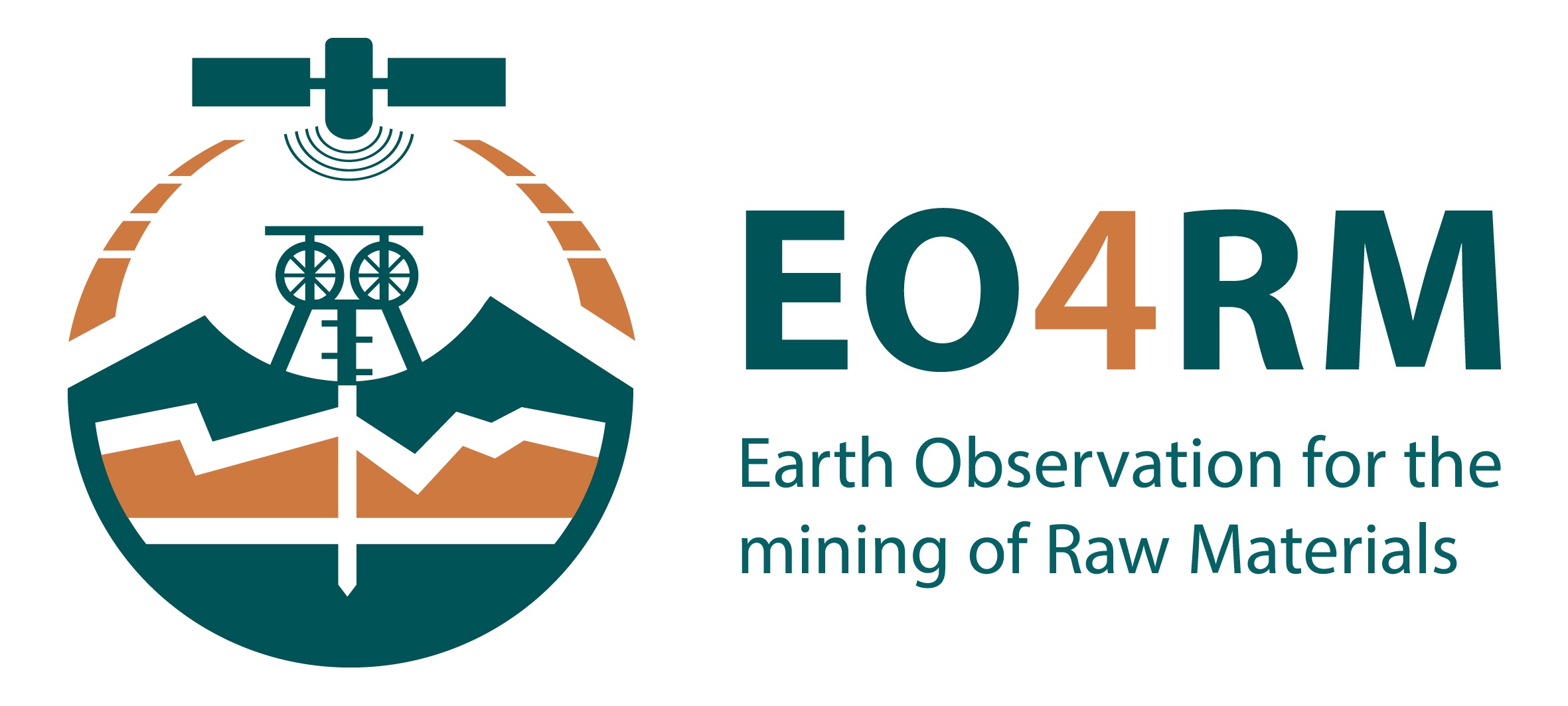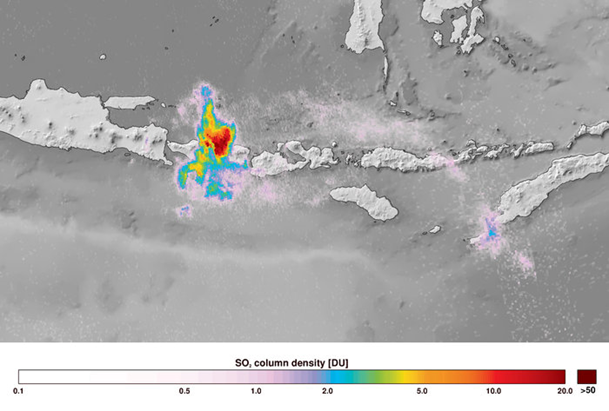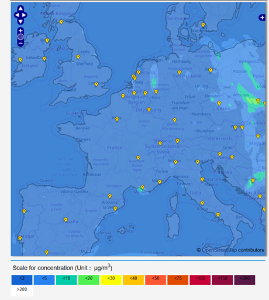...
Air quality NO2 and SO2 | ||||||||
Sentinel -5P captures volcanic eruption in SO2 observations (Source: ESA/DLR) | ||||||||
PRODUCT DESCRIPTION | ||||||||
Category | ||||||||
|
| |||||||
Uses | ||||||||
| ||||||||
Challenges addressed | ||||||||
| ||||||||
Geo-information needs | ||||||||
| ||||||||
Description | ||||||||
This product provides measurements of gas concentrations such as tropospheric NO2 and SO2, which are indicator of the overall pollution of an area. A typical air quality forecast delivers maps of air pollution, including nitrogen dioxide and sulphur dioxide, in a region or local authority as a public information service. The products usually have either high resolution dispersion models or moderate resolution chemical transport models (CTMs) at their heart. These models have spatial resolutions of a few hundred meters (dispersion) and a few km (CTM). Both use current meteorology data (weather forecasts) and available local or regional emission datasets, with boundary conditions obtained from global models. Very accurate dispersion models based on computational fluid dynamics are developed in selected cases (airports, city centres) to account for the detailed effects of individual buildings and pollution build up along major roads with tall buildings – “street canyons”. Because tropospheric transport is very complex, CTM models are limited to averages over a few square km. Monitoring of SO2 is often also used to monitor volcanic eruptions and air pollution. Commonly used satellite products for SO2 and NO2 are OMI, IASI and GOME. Since 2017 the Sentinel-5 Precursor/TROPOMI mission provides measurements of ozone, NO2, SO2, BrO, formaldehyde and aerosol. The upcoming Sentinel-4 mission covers the need for continuous monitoring of the atmospheric chemistry at high temporal and spatial resolution. Main data products will be O3, NO2, SO2, HCHO and aerosol optical depth (AOD), which will be generated with high temporal resolution (~ 1 h) to support air quality monitoring and forecast over Europe. Usually the data is delivered in gridded products. | ||||||||
Known restrictions / limitations | ||||||||
Lifecycle stage and demand | ||||||||
Exploration | Environmental Assessment and Permitting | Design, Construction and Operations | Mine Closure and Aftercare | |||||
| ■ | ■■■■ | ■■ | ■■ | |||||
Environmental Assessment & Permitting: Mining companies need to understand what impact they may have on the air quality around the operation and what impact this air quality might have on people and the environment. As part of the permitting process it is necessary to establish what the baseline is, and to demonstrate that this will not be materially affected when mining operations are underway and when the mine is closed and rehabilitated. Sampling will be required over a wide area and will typically be governed by dispersion modelling. A 10 km2 area may be taken as typical for monitoring of ambient air for a mid-size mining operation. Within this 10 km2 area in the order of 10 to 20 sampling points may be established. There are many different parameters of interest in relation to the atmosphere. From an impact perspective; the key parameters will be Particulate and oxides of carbon, nitrogen and sulphur (COx, NOx and SOx). Individual metal parameters within the air column can also be determined. The amount of particulate that falls out on to the ground can be measured on a per m2 basis (typically 'X' mg/ m2/day). Minimum levels of detection can be taken from 'Technische Anleitung zur Reinhaltung der Luft', which is a comprehensive document issued by the German government, which describes air quality standards. This document, commonly referred to as the 'TA Luft', is used by many countries and organisations as a reference for air quality. Design, Construction &Operations: Mining operations will have point source air emissions from ventilations shafts, processing plants, labs, power plants etc. Measuring the quantity of different parameters emitted into the atmosphere (gaseous and solid) is an important aspect for mining companies to manage their potential environmental impact. Typical parameters are COx, NOx, SOx, Particulate, H2S. The area required to be assessed will be dependent on the footprint of the mining operation and could be 1 km2 to 10 km2. Air emissions can result in transboundary impacts on air quality beyond the site boundary. The extent of transboundary impact depends on the nature of the emission and also prevailing weather conditions and geographic features. Given the mobility of air emissions, an area of hundreds of km2 may need to be monitored. Air emissions will take place on a continuous basis. Many air emissions will be stable and infrequent measurement of monthly to quarterly will be sufficient. Other emissions will be more variable and subject to disruption, these would ideally be measured on a continuous basis. In addition to point source air emissions, mines will have significant fugitive air emissions, these can be plumes from pit blasts, dust form vehicular movement, dust blow off TSF / WRD, and fires. Monitoring for fugitive emissions is an important aspect for mining companies to manage their potential environmental impact. This fugitive monitoring can also be used to identify sources of emission and implement corrective actions (including identifying spontaneous combustion fires and arrange to have these extinguished). The frequency required for monitoring this parameter is site specific. In many instances monthly would be sufficient but in particular for the identification of spontaneous combustion continuous monitoring would be of benefit. Mine Closure & Aftercare: Monitoring will be required during the closure and aftercare period to demonstrate that there are no ongoing air emissions from the site that could cause an impact. Point sources will no longer be operational. The focus will be on fugitive emissions from WRD's and TSF's. Assessment of this parameter will involve field work including measurement of air quality for various parameters and measurement of particulate fallout. Depending on climatic conditions air emissions can travel long distances. The area to be assessed can be hundreds of km2. Monthly data is sufficient, this can be used to calculate daily deposition rates | ||||||||
Geographic coverage | ||||||||
| Coverage is global | ||||||||
EARSC Thematic Domain | ||||||||
Domain | Atmosphere and Climate | |||||||
| Sub-domain | Atmosphere | |||||||
| Product description | Monitor Air Quality and Emissions | |||||||
PRODUCT SPECIFICATIONS | ||||||||
Input data sources | ||||||||
| Satellite | IASI | TROPOMI/Sentinel-5p | OMI | GOME | Sentinel- 5 | |||
| Status | Operational | Operational | Operational | Operational | Future | |||
| Operator | EUMETSAT | ESA | NASA | EUMETSAT | ESA | |||
| Data availability | Public | Public | Public | Public | n/a | |||
| Resolution (m) | 100 km | 7x7 km | 13x24 km | 1 km | n/a | |||
| Coverage | Global | Global | Global | Global | Global | |||
| Frequency (days) | daily | daily | daily | 3 days | Sub-daily | |||
| Launch year | 2006 (MetOp-A) and 2012 (MetOp-B) | 2017 | 2004 | 2006 | 2020 | |||
Website | link | link | link | link | link | |||
Minimum Mapping Unit (MMU) | ||||||||
n/a (the product is directly based on the input data; the smallest unit is 1 pixel). | ||||||||
Accuracy / constraints | ||||||||
Thematic accuracy: Atmosphere– Monitor Air Quality and Emissions. 80% For the mining industry the targeted nano-satellites probably are the most suitable source of information, because emissions from water plumes can be very low. Probably the emissions caused by mining activities won’t cross the threshold in background values of the larger satellites. Spatial accuracy: See above. Needed accuracy in the mining sector is often for large areas in relatively high spatial resolution. | ||||||||
Accuracy assessment approach & quality control measures | ||||||||
This is done by field validation using in-situ measurements. | ||||||||
Timeliness | ||||||||
Usually within hours. | ||||||||
Availability | ||||||||
| Data is typically freely available for non-commercial use through the open data policy of the different space agencies. See for an overview of the used satellites the table above. | ||||||||
Delivery / output format | ||||||||
Typically, the datasets are delivered in HDF5, NetCDF, binary or in shapefiles. | ||||||||
USE CASE | ||||||||
Source: SO2 daily mean forecast based on the Copernicus Atmospheric Monitoring Service (CAMS, Copernicus) The atmospheric observations are used in monitoring services of air quality for different air quality parameters. For example using the Coperniucs Atmospheric Monitoring Service (CAMS) provided by Copernicus to get hourly forecasts of Air Quality over Europe. Ensemble model (so called CAMS regional Ensemble) is based on seven state-of-the-art numerical air quality models developed in Europe from all seven models. They are combined via an ensemble approach, consisting in calculating the median value of the individual outputs. | ||||||||


